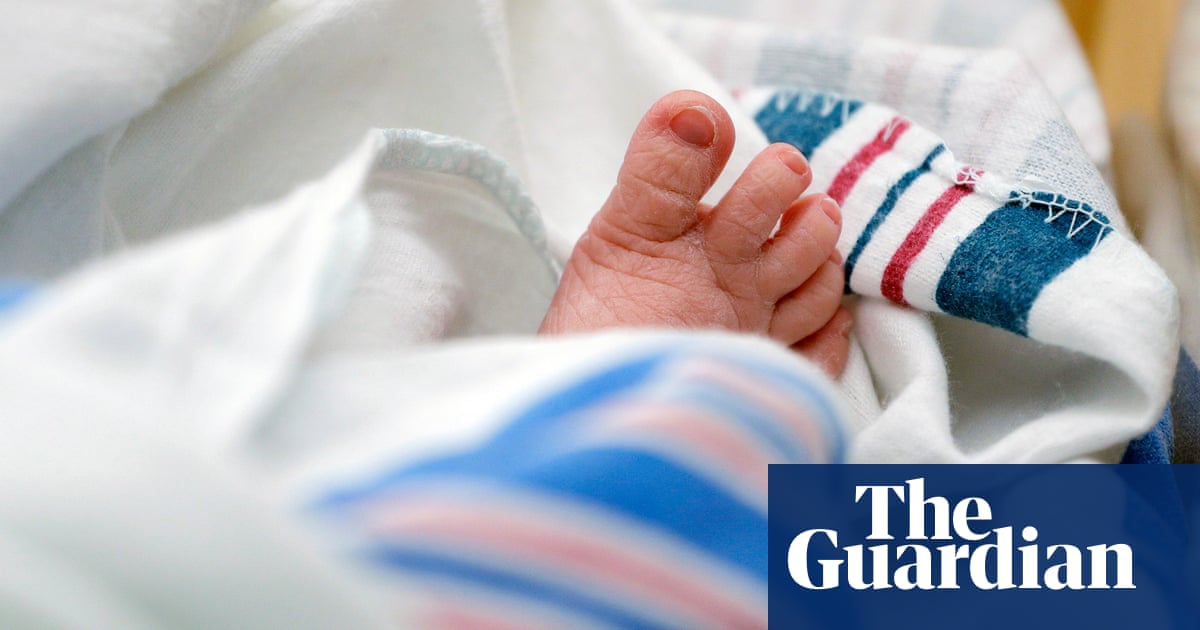
Infant mortality has risen for the third year in a row in England, with the risk of death for babies born in deprived areas almost three times higher than those from wealthier postcodes, figures show.
The rate of deaths for children under one year old increased from 3.8 to 3.9 per 1,000 births last year, although the overall number of infant deaths decreased by 2% because of a lower birthrate.
Prof Karen Luyt, a neonatologist at the University of Bristol and director of the National Child Mortality Database (NCMD), said this reflected how “inequity has persisted”, with strong disparities across ethnicity, geography and socioeconomic background.
“At the moment there is a problem,” she said. “That means we need to change course to address it.”
Prematurity is the top cause of death for infants, which Luyt said was due to women’s health, including obesity and smoking, as well as regional variation in the availability of specialist care during pregnancy and after birth.
She added that rising child poverty rates also contributed, with the UK “falling behind” comparable countries.
The UK ranks 10th out of 38 OECD countries for infant mortality (deaths in children under the age of one), with four deaths recorded per 1,000 live births. Infant mortality is known to be an indicator for how the healthcare system is performing.
Luyt said the government should introduce policies to reduce infant mortality, including interventions targeting the “areas and groups of greatest need”.
Although ethnic disparities narrowed slightly last year, the rate for black infants remained more than double that of white babies. Over a five-year period, the death rate for black Caribbean babies was 9.2 per 1,000 infant population, 8.4 for black African and 7.2 for Asian Pakistani, compared with 2.8 for white British infants.
The figures also show a wide socioeconomic gap, with the death rate of infants from the most deprived neighbourhoods at 5.5 per 1,000 live births, compared with 2 in the wealthiest areas. This represents a slight narrowing on the previous year, although in the past five years there has been a rising year-on-year rate in the most deprived areas, contrasted with a comparatively stable rate for infants from richer neighbourhoods.
The figures also show considerable geographical variation, with the highest rates in the West Midlands and Yorkshire, and the lowest in the south of England.
Researchers have previously suggested that infant mortality rates could be lowered through targeted interventions in teenage pregnancy, maternal depression, preterm birth and smoking during pregnancy, as well as structural changes to address socioeconomic inequality.












